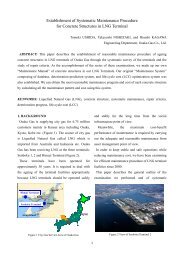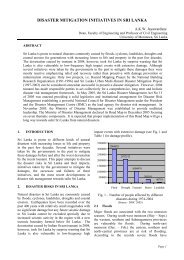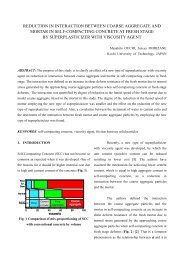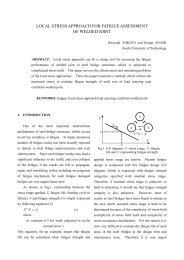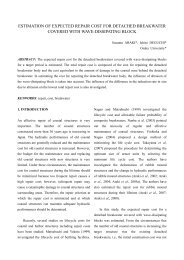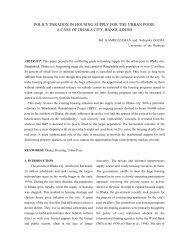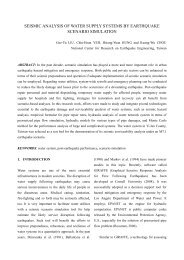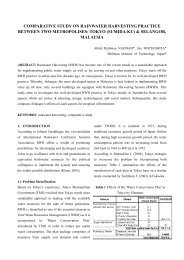DEVELOPMENT OF FLY ASH USAGE IN THAILAND
DEVELOPMENT OF FLY ASH USAGE IN THAILAND
DEVELOPMENT OF FLY ASH USAGE IN THAILAND
Create successful ePaper yourself
Turn your PDF publications into a flip-book with our unique Google optimized e-Paper software.
LHC<br />
NC<br />
46%<br />
Others<br />
12%<br />
SRC<br />
SCC<br />
SCC<br />
2%<br />
SRC<br />
5%<br />
LHC<br />
35%<br />
NC<br />
Others<br />
Fig.3 Distribution of fly ash used in various types of concrete in 1999<br />
(forecasted from January to April 1999)<br />
LHC:Low heat concrete, SRC:Sulfate resisting concrete,<br />
SCC:Self-compacting concrete, NC:Normal concrete<br />
3. PROBLEMS AND STRATEGIES TO<br />
PROMOTE THE USE <strong>OF</strong> <strong>FLY</strong> <strong>ASH</strong><br />
3.1 Problems<br />
During 1980’s, the image of fly ash produced from<br />
Mae Moh was negative due to many researchers’<br />
reports which pointed out the volume instability of<br />
concrete using fly ash due to high SO 3 content in<br />
the fly ash (mostly in the range of higher than 5%<br />
by weight of the fly ash) [12, 13]. Therefore the<br />
uses of fly ash at that time were in the low-value<br />
manners such as used for soil improvement, for<br />
embankment slope stability, for sub-base of<br />
pavement, for concreting of temporally pavement,<br />
etc. It was until the early 1990’s that the SO 3<br />
content of fly ash became lower to conservative<br />
values of below 5%. From that time, various<br />
intensive researches were restarted and many<br />
merits were found from using the fly ash in<br />
concrete as mentioned earlier in the section of<br />
introduction. In spite of the positive study results,<br />
fly ash was very little used in concrete production<br />
until 1997 (see Fig.1) due to many reasons as<br />
follows.<br />
1) Lack of understanding and knowledge on<br />
fly ash among the engineers<br />
2) Doubt on fly ash quality and its<br />
consistency<br />
3) No systematic supplying system to<br />
facilitate the use.<br />
3.2 Strategies<br />
Many efforts were made by the Committee on<br />
Concrete and Materials of the Engineering Institute<br />
of Thailand to promote the use of fly ash in<br />
Thailand.<br />
3.2.1 Research<br />
An original research group consisting of<br />
researchers from 7 universities in Thailand was<br />
formed to study the properties of fly ash and<br />
concrete using fly ash. By this original group,<br />
more than 30 research reports and more than 100<br />
technical papers had been already published until<br />
2000. After that many other universities also<br />
started to conduct research on fly ash and many<br />
more publications have been produced since then.<br />
3.2.2 Education and Training<br />
From 1994 to 2001, eight seminars were arranged,<br />
by the committee, in various places around the<br />
country to give information and educate engineers<br />
on the effective use of fly ash in concrete. A<br />
learn-on-line project was created by the<br />
cooperation between the National Science and<br />
Technology Development Agency, the Electricity<br />
Generating Authority of Thailand and the Joint<br />
Research Group to provide information in a more<br />
effective and broadened way [14]. Many books<br />
and documents were also published for the purpose<br />
of educating engineers in the country [11,15]<br />
3.2.3 Support for Real Practice<br />
Various efforts were made to provide support for<br />
real application as follows<br />
1) Conducting demonstration construction<br />
using fly ash concrete. Many<br />
demonstration construction projects were<br />
conducted during 1992 to 1996 (see Figs.<br />
4, 5 and 6) to provide information.



